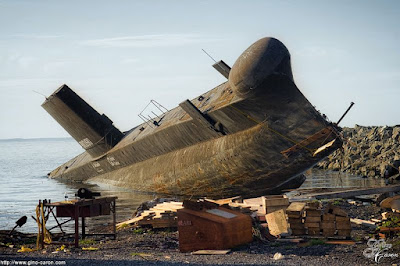If you’re like me, you’re aware that GPS satellites exist as
do various surveillance satellites but you probably have no idea where they’re
located (orbital height above sea level) or what this means in terms of war in
space and satellite survivability.
Most people assume that all orbiting objects exist at more
or less the same altitude but this is not the case. There are various bands of orbits at various
heights out to around the geosynchronous orbit at 36,000 km (22,500 mi). Further than that is the so-called graveyard
orbit where satellites are parked at the end of their operating lives if they
are not de-orbited.
The two main orbital bands of interest for us are:
As a point of comparison, the Earth is around 4000 miles in
radius (center of the Earth to the surface of the oceans)
Space has become a crowded place.
A National Interest website article suggests that China has the
capability to achieve anti-satellite kills at orbits out to Geosynchronous
altitudes (35,786 km / 22,236 mi).[4]
One of the implications of the crowding of orbits is that when
war with China comes and anti-satellite weapons are used by both sides, the
number of objects (debris) in orbit will increase by orders of magnitude likely
resulting in a cascade of collisions (at orbital speeds, any collision is
probably totally destructive) with surviving satellites resulting in ever more
debris and ever more collisions. In
other words, at some point, a chain reaction will occur which will destroy all
satellites in a given orbit.
Legitimate uses are also contributing to the crowding.
Space is a lot more complex, in terms of military use and
combat, than most of us realize and the implications of combat in space are
poorly understood by almost all of us.
- Low Earth Orbit (LEO) (<2000 km / 1,200 mi)
- NavStar GPS Orbit (20,180 km / 12,540 mi)
US Space Command, which currently is responsible for monitoring the heavens, is tracking some 41,000 pieces of space junk bigger than 10 centimeters … [1]
… NASA, tracks over 25,000 objects larger than 10 cm in LEO, the estimated number between 1 and 10 cm in diameter is 500,000. The amount of particles bigger than 1 mm exceeds 100 million.[3]It’s becoming even more crowded by the debris fields of anti-satellite (ASAT) tests. Russian and Chinese ASAT test debris accounted for 20% of orbital collision warnings in 2022.[1]
… the 700 to 900 kilometer band of LEO, a region that is increasingly crowded due to advent of mega-constellations such as SpaceX’s Starlink communications satellites. That orbital altitude also is being used by the Space Development Agency for its planned Transport Layer of 300 to 500 high-speed, high-volume communications birds.[1]LEO confers interesting capabilities and limitations.
Unlike geosynchronous satellite, satellites in LEO have a small field of view and so can observe and communicate with only a fraction of the Earth at a time. This means that a network (or "constellation") of satellites is required to provide continuous coverage. Satellites in lower regions of LEO also suffer from fast orbital decay and require either periodic re-boosting to maintain a stable orbit or launching replacement satellites when old ones re-enter.[3]As a reference and point of interest, the 20-Feb-2008 shootdown of satellite USA-193 by a SM-3 Standard missile launched by USS Lake Erie occurred at an altitude of around 250 km (155 miles).
https://breakingdefense.com/2023/06/debris-from-asat-tests-creating-bad-neighborhood-in-low-earth-orbit-analyst/
https://en.wikipedia.org/wiki/Global_Positioning_System
https://en.wikipedia.org/wiki/Low_Earth_orbit
https://nationalinterest.org/blog/buzz/how-china-could-win-war-against-america-kill-satellites-85176


